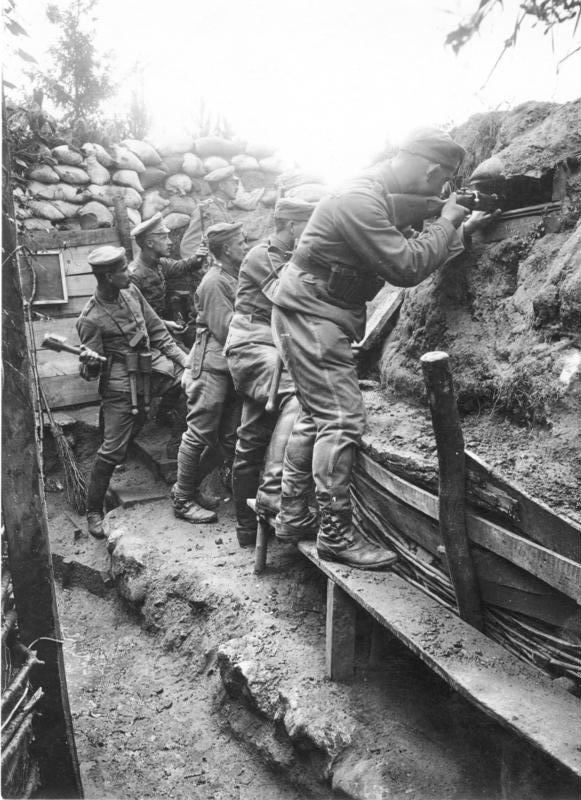|
City Park In Zemun
City Park or Zemun Park ( sr, Градски парк у Земуну / Земунски парк) is a park in Zemun, a neighborhood of Belgrade, the capital of Serbia. Located on the rim of the Old Core of Zemun, it is considered today as one of the symbols of Zemun and one of the most beautiful parks in Belgrade. Location The park is located in the Zemun's neighborhood of Donji Grad. It has an irregular shape and is bounded by the streets ''Nemanjina'' on the west, ''Nikolaja Ostrovskog'' and ''22. Oktobra'' on the south, ''Vrtlatska'' while on the north the border is marked by the ''Savska'' street and the complex of the Clinical Hospital "Zemun". With the smaller, surrounding green and wooded areas between the buildings and along the streets, it forms a green belt, stretching from Zemunski Kej Zemunski Kej ( sr-Cyr, Земунски Кеј) is an urban neighborhood of Belgrade, the capital of Serbia. It is located in Belgrade's municipality of Zemun. Location Z ... [...More Info...] [...Related Items...] OR: [Wikipedia] [Google] [Baidu] |
Zemun
Zemun ( sr-cyrl, Земун, ; hu, Zimony) is a municipality in the city of Belgrade. Zemun was a separate town that was absorbed into Belgrade in 1934. It lies on the right bank of the Danube river, upstream from downtown Belgrade. The development of New Belgrade in the late 20th century expanded the continuous urban area of Belgrade and merged it with Zemun. The town was conquered by the Kingdom of Hungary in the 12th century and in the 15th century it was given as a personal possession to the Serbian despot Đurađ Branković. After the Serbian Despotate fell to the Ottoman Empire in 1459, Zemun became an important military outpost. Its strategic location near the confluence of the Sava and the Danube placed it in the center of the continued border wars between the Habsburg and the Ottoman empires. The Treaty of Belgrade of 1739 finally placed the town into Habsburg possession, the Military Frontier was organized in the region in 1746, and the town of Zemun was granted the rig ... [...More Info...] [...Related Items...] OR: [Wikipedia] [Google] [Baidu] |
Stari Banovci
Stari Banovci ( sr-cyr, Стари Бановци) is a suburban settlement in Serbia. It is located in the Stara Pazova municipality, in the region of Syrmia (Syrmia District), Vojvodina province. Stari Banovci, Banovci-Dunav and Novi Banovci form together urban settlement ''Banovci''. The population of the settlement as the whole is 16,000 people (2011 census). Name The name of the settlement in Serbian is plural. History In ancient times, Roman fortress named Burgene existed at this location. The village of Banovci existed here since the 16th century, and perhaps even before that. Another two villages, Darinovci and Tusa, were situated at this location, but both were later resettled. According to the Ottoman census from 1566/7, most of the inhabitants of Banovci were Serbs. In 1734, the population of the village was composed of 53 houses. In 1756, population numbered 211 houses. During the Axis occupation in World War II, 158 villagers were murdered, 52 were sent to conce ... [...More Info...] [...Related Items...] OR: [Wikipedia] [Google] [Baidu] |
Lard
Lard is a semi-solid white fat product obtained by rendering the fatty tissue of a pig.Lard entry in the online ''Merriam-Webster Dictionary''. Accessed on 2020-07-05. It is distinguished from , a similar product derived from fat of or . Lard can be rendered by steaming, boiling, or dry heat. The culinary qualities of lard vary somewhat depending on the origin and processing method; if properly rendered, it may be nearly odorless and tasteless.E. S. Clifton, Joseph Kastelic, and Be ... [...More Info...] [...Related Items...] OR: [Wikipedia] [Google] [Baidu] |
Grocery Store
A grocery store ( AE), grocery shop ( BE) or simply grocery is a store that primarily retails a general range of food products, which may be fresh or packaged. In everyday U.S. usage, however, "grocery store" is a synonym for supermarket, and is not used to refer to other types of stores that sell groceries. In the UK, shops that sell food are distinguished as grocers or grocery shops (though in everyday use, people usually use either the term "supermarket" or a "corner shop" or "convenience shop"). Larger types of stores that sell groceries, such as supermarkets and hypermarkets, usually stock significant amounts of non-food products, such as clothing and household items. Small grocery stores that sell mainly fruit and vegetables are known as greengrocers (Britain) or produce markets (U.S.), and small grocery stores that predominantly sell prepared food, such as candy and snacks, are known as convenience shops or delicatessens. Definition The definition of "grocery st ... [...More Info...] [...Related Items...] OR: [Wikipedia] [Google] [Baidu] |
Taproom
Bar or BAR may refer to: Food and drink * Bar (establishment), selling alcoholic beverages * Candy bar * Chocolate bar Science and technology * Bar (river morphology), a deposit of sediment * Bar (tropical cyclone), a layer of cloud * Bar (unit), a unit of pressure * BAR domain, a protein domain * Bar stock, of metal * Sandbar Computing * Bar (computer science), a placeholder * Base Address Register in PCI * Bar, a mobile phone form factor * Bar, a type of graphical control element Law * Bar (law), the legal profession * Bar association * Bar examination Media and entertainment * ''Bar'' (Croatian TV series) * Bar (Czech TV series) * Bar (dance), Turkey * Bar (music), a segment * Bar (Polish TV series) * Bar (Slovenian TV series) * ''Bay Area Reporter'', a newspaper * ''Biblical Archaeology Review'', a magazine Places * Bar (Martian crater) * Bar, Rutog County, Tibet, China * Bar (river), France * Bar, Corrèze, France, a commune * Bar-le-Duc, France, a commune formerly ... [...More Info...] [...Related Items...] OR: [Wikipedia] [Google] [Baidu] |
Zemun Gymnasium
The Zemun Gymnasium ( sr, Земунска гимназија, Zemunska gimnazija) is the most prominent gymnasium in Belgrade, Serbia. It is located in Belgrade’s Zemun municipality. Founded in 1858, it's Belgrade second oldest, after the First Belgrade Gymnasium (founded in 1839), and Serbia's sixth oldest gymnasium, after those in Sremski Karlovci (founded in 1791), Novi Sad (founded in 1810), Kragujevac (founded in 1833) and Šabac (founded in 1837). By the number of students, it is the largest gymnasium in Serbia today. History The gymnasium was founded on 23 September 1858 on the orders of the Austrian military command in Zemun as a two-year lower realgymnasium. It initially had only one grade and just 21 students. Zemun was then a part of the Austrian Empire that was to become Austria-Hungary, and the language of instruction was German. By 1872 the gymnasium had four grades. In 1883 it was decided that Serbian should be the language of instruction, and a year l ... [...More Info...] [...Related Items...] OR: [Wikipedia] [Google] [Baidu] |
Kalvarija, Zemun
Kalvarija, also formerly known as Marija Bursać ( sr, Калварија or Марија Бурсаћ) is an urban neighborhood of Belgrade, the capital of Serbia. It is located in Belgrade's municipality of Zemun. Location Kalvarija is located southwest of downtown Zemun. It borders the neighborhoods of Sava Kovačević on the north, Železnička Kolonija on the west, the northernmost extension of Bežanijska Kosa on the south and Tošin Bunar on the east and southeast. Characteristics In the 18th and 19th century, during the existence of Kontumac, quarantine complex in Zemun at the Austrian-Turkish border, those who would die in quarantine were buried in Kalvarija, at the so-called "plague cemetery". Kalvarija is one of three hills on which the old town of Zemun developed. The other two are Ćukovac, into which Kalvarija extends in the northeast, and Gardoš, on the right bank of the Danube. However, those hills are not natural features. Zemun loess plateau is the f ... [...More Info...] [...Related Items...] OR: [Wikipedia] [Google] [Baidu] |
Lazaretto
A lazaretto or lazaret (from it, lazzaretto a diminutive form of the Italian word for beggar cf. lazzaro) is a quarantine station for maritime travellers. Lazarets can be ships permanently at anchor, isolated islands, or mainland buildings. In some lazarets, postal items were also disinfected, usually by fumigation. This practice was still being done as late as 1936, albeit in rare cases. A leper colony administered by a Christian religious order was often called a lazar house, after the parable of Lazarus the beggar. Throughout history In 1592, a lazaretto made of wooden huts was built on Manoel Island in Malta during a plague epidemic. It was pulled down in 1593 after the disease had subsided. In 1643, Grandmaster Lascaris built a permanent Lazzaretto in the same place to control the periodic influx of plague and cholera on board visiting ships. The hospital was subsequently improved over time, and was enlarged during the governorship of Sir Henry Bouverie ... [...More Info...] [...Related Items...] OR: [Wikipedia] [Google] [Baidu] |
Cantonment
A cantonment (, , or ) is a military quarters. In Bangladesh, India and other parts of South Asia, a ''cantonment'' refers to a permanent military station (a term from the British India, colonial-era). In military of the United States, United States military parlance, a cantonment is, essentially, "a permanent residential section (i.e. barrack) of a fort or other military installation," such as Fort Hood. The word ''cantonment'', derived from the French language, French word '':fr:canton, canton'', meaning ''corner'' or ''district'', refers to a temporary military or winter encampment. For example, at the start of the Waterloo campaign in 1815, while the Arthur Wellesley, 1st Duke of Wellington, Duke of Wellington's headquarters were in Brussels, most of his Anglo–allied army of 93,000 soldiers were ''cantoned'', or stationed, to the south of Brussels. List of permanent cantonments Afghanistan The former Sherpur Cantonment in Kabul, Afghanistan, which was the site of the Siege ... [...More Info...] [...Related Items...] OR: [Wikipedia] [Google] [Baidu] |
Loophole (firearm)
A loophole is a protected small opening, which allows a firearm to be aimed and discharged, while providing cover and concealment for the rifleman. To prevent detection, the rifle's muzzle should not protrude through the loophole, particularly at night to hide the muzzle flash. Arrowslit The precursor to the loophole for firearms was the arrowslit, which is a narrow aperture in a fortification for an archer to launch arrows or an arbalist to launch crossbow bolts. The earliest use of the arrowslit was alleged to have been by Archimedes during the siege of Syracuse in 214–212 BC. Arrowslits were used in ancient Greek warfare and by the military of ancient Rome. There was a reintroduction of arrowslits during the medieval warfare period at Dover Castle and Framlingham Castle in England and by Richard the Lionheart at Château Gaillard in France. First World War During the First World War, the static movement of trench warfare and a need for protection from snipers c ... [...More Info...] [...Related Items...] OR: [Wikipedia] [Google] [Baidu] |
Austro-Turkish War (1788–1791)
The Austro-Turkish War was fought in 1788–1791 between the Habsburg monarchy and the Ottoman Empire, concomitantly with the Russo-Turkish War (1787–1792), Russo-Swedish War (1788–1790) and Theatre War. It is sometimes referred to as the Habsburg–Ottoman War or the Austro-Ottoman War. War aims The war began as a Russian-Turkish conflict. The Russian Empire, headed by Catherine the Great, had been involved in History of the Russo-Turkish wars, previous wars of conquest against the Ottomans, and the two nations were openly hostile. In August 1787, after "numerous Russian provocations" according to Hochedlinger, the Ottoman Empire declared war on the Russians.Hochedlinger (2003:382) The Austrian Emperor Joseph II, Holy Roman Emperor, Joseph II had concluded Austro-Russian alliance, an alliance with the Russians in 1781, which (Hochedlinger) "obliged [him] to assist the Russians with his full might ... Vienna felt that it had to act promptly so as not to annoy the [Empress]. ... [...More Info...] [...Related Items...] OR: [Wikipedia] [Google] [Baidu] |




